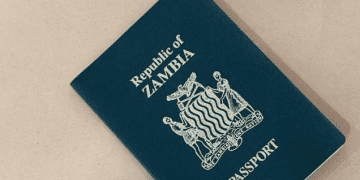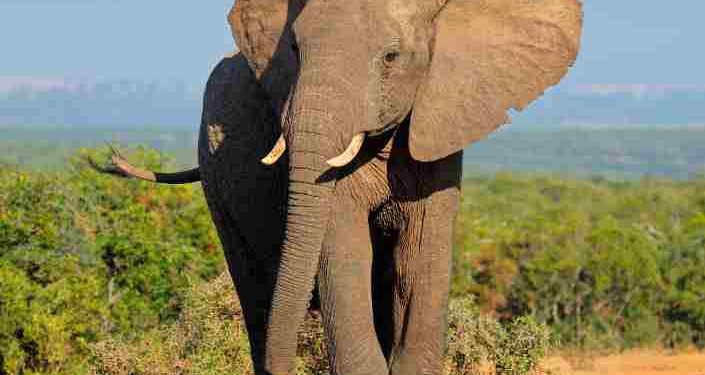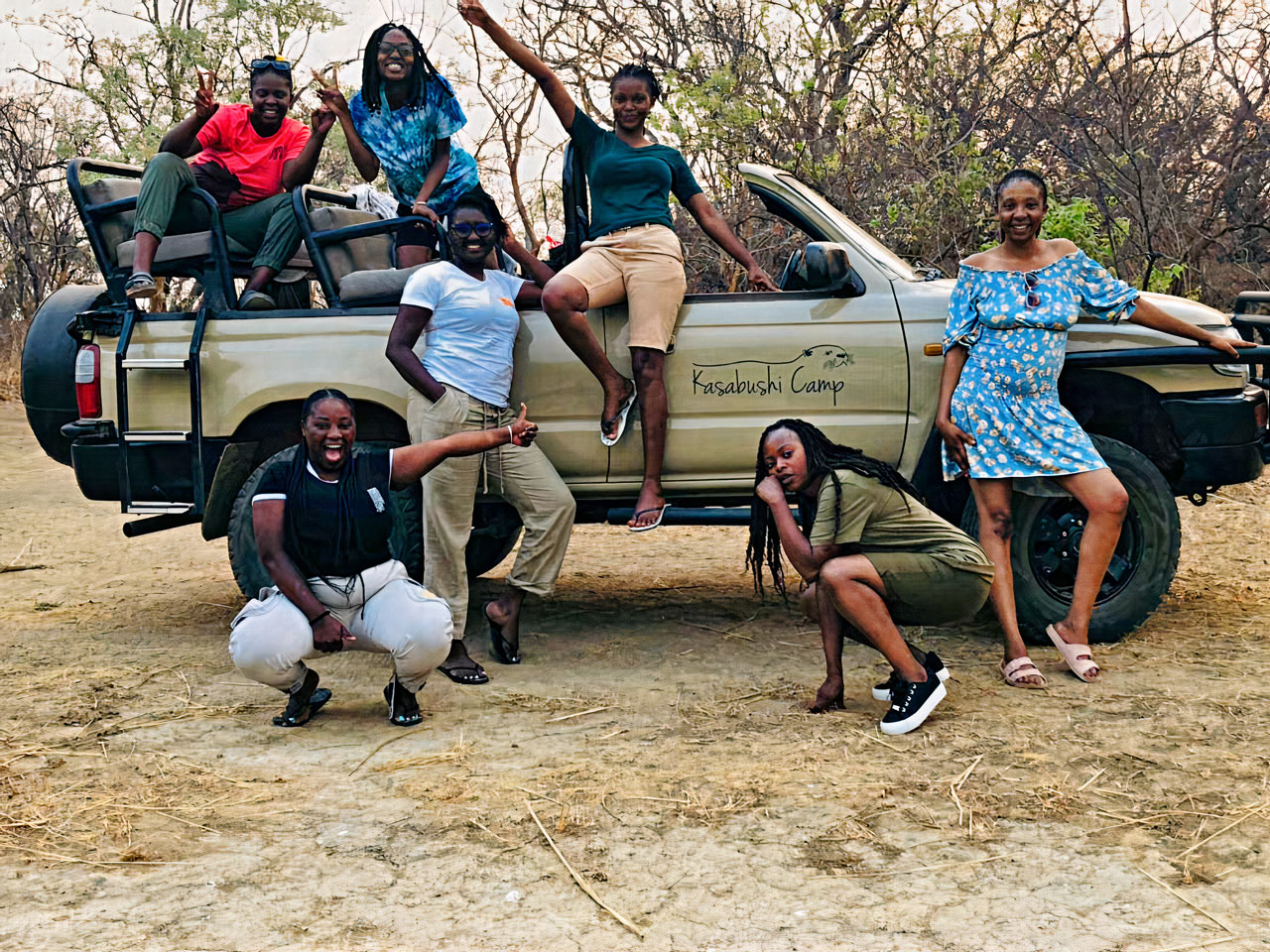14.10.2024 Africa has vast majority of elephants accounting for an estimated 53% of the global population of the elephant species. According to Hannah Ritchie (2024), “There are two species of elephant: the African (with the official name Loxodonta africana) and the Asian (Elephas maximus) elephant. There are around 450,000 elephants in the world. But many populations are much smaller than they used to be.” Saving elephants and other wildlife in Africa urgently need donor support or aid from the international community and well-wishers to sufficiently feed and care for them during this period of unprecedented climate crisis. Climate change has unrentlessly ravaged most geographical landscapes on the continent of Africa and adversely affected the wildlife habitats, especially across the Southern and Eastern African regions, said Dr. Kelvin Kamayoyo, Technical Advisor for African Rivers.

(A) Climate crisis affect Elephants
The evolution of climate change is presenting a complex and unfamiliar but challenging environment for Elephants and other wildlife species to survive healthy and peacefully. With ongoing climate change, the increases in air temperature and its variability are expected to foster the occurrence of extreme climate events (Schär et al., 2004; Lehmann et al., 2015). These extreme climate events are inducing climate crisis characterised by drought, extreme temperature, rising tree scarcity, human-wildlife conflicts, and water insecurity. lt is for this reason that countries such as Namibia, Zambia, Botswana, and Zimbabwe which are home to the Kavango-Zambezi (KAZA) Transfrontier Conservation Area (TFCA) covering an estimated 520,000 km2 with approximately 250,000 African elephants, have declared drought a national disaster and emergency.

(B) African countries face Tree scarcity puzzle
After 200 years, now Africa is experiencing the real impact of climate change and simultaneously facing the tree scarcity puzzle induced by deforestation and less precipitation. Forests and trees are not only essential to combating climate change but also are a lifeline for elephants and other wildlife across the globe. Particularly, the health of the forests ought to be given much attention because they help build climate resilience by supporting freshwater and biodiversity restoration capabilities. The fact, that the said countries have declared drought a national disaster and emergency, it also implies that climate change is already having devastating impact on the welfare of wildlife and forests. Drought has turned a pervasive constraint of tree growth (Babst et al., 2019). Prolonged water scarcity alters forest composition and demography by impairing tree regeneration and rising mortality rates (Ruiz-Benito et al., 2013; Hember et al., 2017; Senf et al., 2021), potentially inducing changes in forests structure and composition (Dyderski et al., 2018) and modulating productivity (García-Valdés et al., 2021).
(C) Culling of Wildlife and feed starving People

Climate change is further posing significant threat on the life of African elephants and other wildlife through increased vulnerability to disease, reduced habitats, and induce human-wildlife conflicts. Climate change has led to acute drought in the Southern Africa region thereby prompting some countries mostly, in the KAZA TFCA resorting to implementing survival measures in order to protect both animals and humans such as culling of wildlife and distributing the meat to feed the starving people. While adopting such approaches could be perceived as precautionary measures, the question of sustainability does voluntarily arise including its potential impact on the ecosystem and the performance of the tourism sector in the medium to long-term.
(D) Elephants are Natives of Africa
Elephants are natives and have been an integral part of Africa’s culture and economy for millennia, thanks to the rich natural forests resource and animal stewardship of the local communities. Human beings, naturally have a moral compelling locus standi to care for the wildlife and also promote a healthy ecosystem for the well-being of all species on planet earth. Amidst climate change events and growing population of elephants, there is need to design strategies that foster co-existence of humans and wildlife in order to reduce the number of human-wildlife conflicts.
(E) Prioritise needs of Elephants in Climate Action Agenda
The life of elephants and other wildlife species is valuable, hence the need to reinforce efforts aimed at minimizing the adverse impact of climate induced events that affect their well-being. Going by the adverse scale and undetermined longevity of climate change, it is now critical to consider prioritising saving elephants and other wildlife as a matter of urgency. Below are some of the possible medium and long-term strategies that can be implemented in Africa:

(1) Encourage the setting up of Elephant Orphanages
Although the ideal place for elephants to live is in the wild, this is not always possible and as such there is need to seek alternative habitats such as Elephant Orphanages or Sanctuaries with the aim to release them back into the wild herds adjoining the designated areas. The Elephant Sanctuaries or Orphanages could provide captive elephants a safe haven dedicated to their well-being.
(2) Promote climate science literacy

Climate science literacy should be promoted and mainstreamed at all levels of human society. This is because climate science literacy helps people to better understand their influence on climate and appreciate the influence of climate on their livelihoods and society in general. Therefore, climate science literacy should be at the epicentre of climate action agenda. This can be achieved through community engagement and intensive education regarding the importance of effective watershed management, reforestation, health of rivers, and erecting sign posts to minimise human-animal conflicts.
(3) Mobile water bowser trucks
Water scarcity in Africa is on the rise due to climate change and population growth. However, the effects of water scarcity equally affects wildlife from the perspective of negative externalities. Therefore, embracing the concept of water bowser tank trucks can act as a lifesaver to the well-being of the elephants and other wildlife. Bowser tank trucks are essential for water transportation and addressing water-related challenges in a particular area. Additionally, mobilising mobile bowser trucks can be used to restore the drying wild dams and ponds within the protected areas or parks in order to supply drinking water for elephants and other wildlife.
(4) Host Elephants & Climate Action Regional Summit
Host the first-ever “Elephants & Climate Action Regional Summit” to foster international dialogue on elephant welfare, address over population of elephants, explore innovative methods to resolve human-animal conflicts, and accelerate efforts towards protecting wildlife and uplifting the livelihoods of the local communities.
(F) River Guardians and Animal Stewards

Notwithstanding the aforesaid, tackling climate crisis should start with building capacity among the river guardians and animal stewards in order to effect sustainable approaches to protecting the environment. Everyone needs to play a role if climate action agenda is to be impactful and minimise the undesirable effects of climate change. Saving elephants and other wildlife is not an option but it would require discovery of inclusive platforms that permit multi-disciplinary and multi-sectoral approaches towards addressing climate change emerging issues and transboundary wildlife management issues.
The Author is a scholar and technical advisor for African Rivers a non-profit international nongovernmental organization based in Lusaka, Zambia. For comments and any other information contact, email:[email protected] or Whatsapp line: +260952879001








































